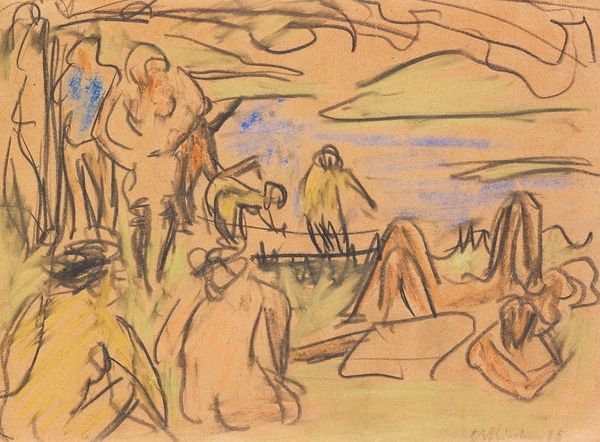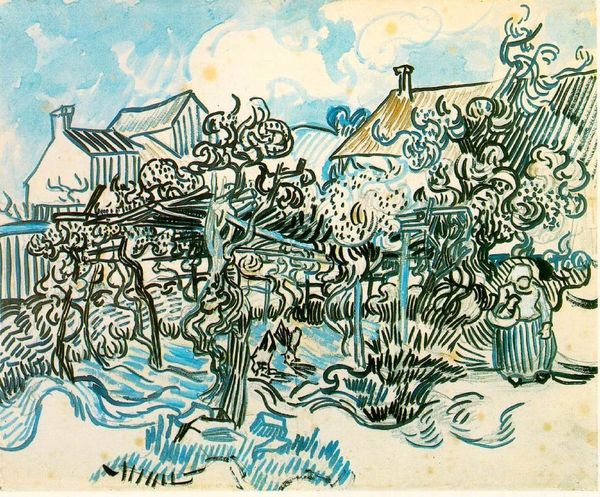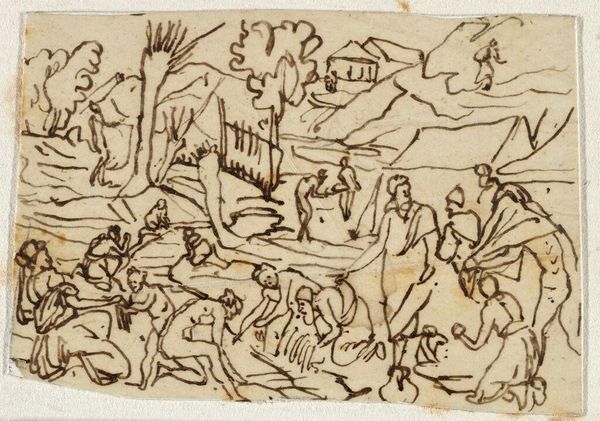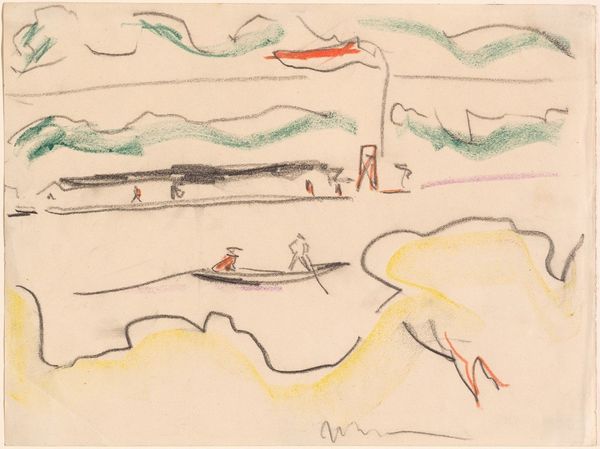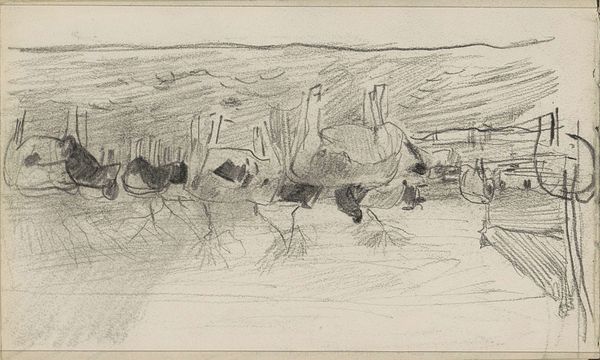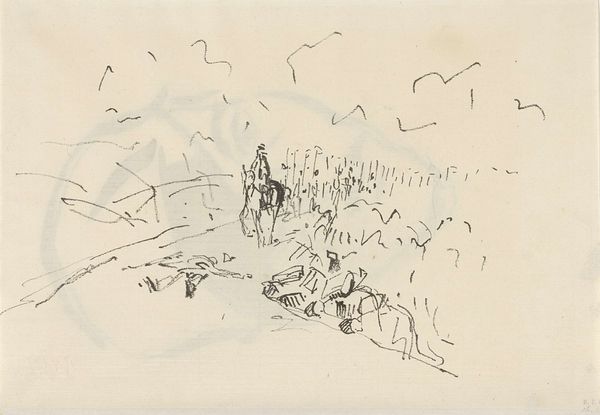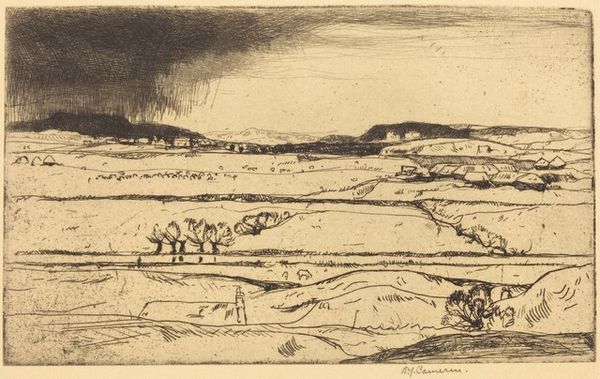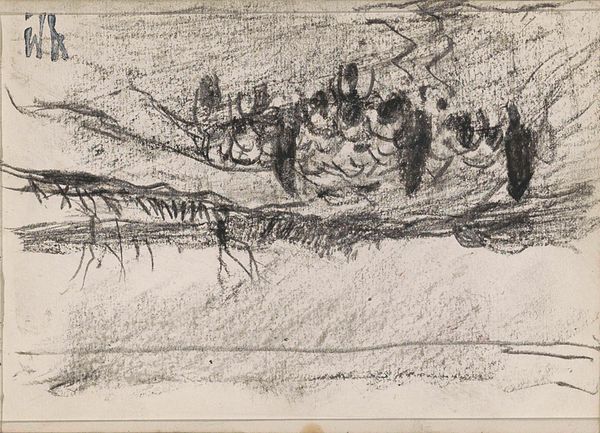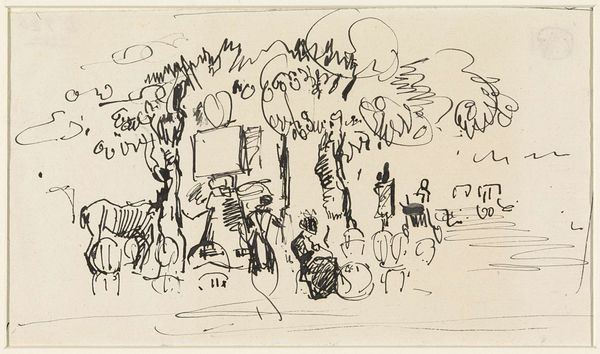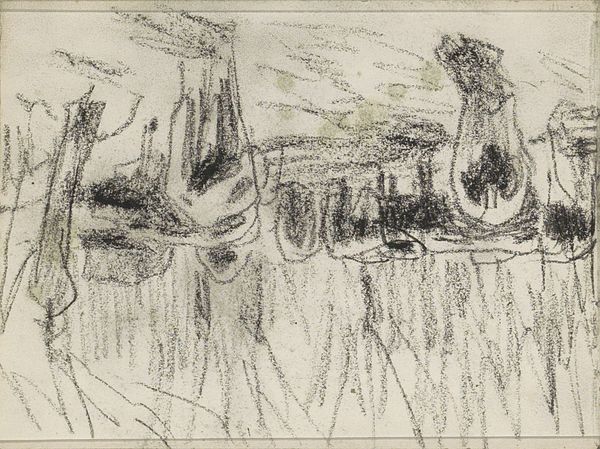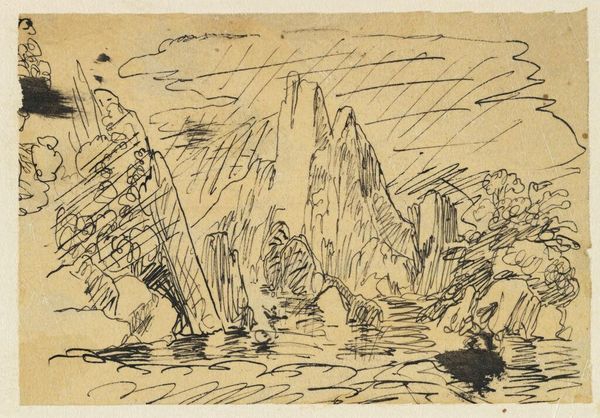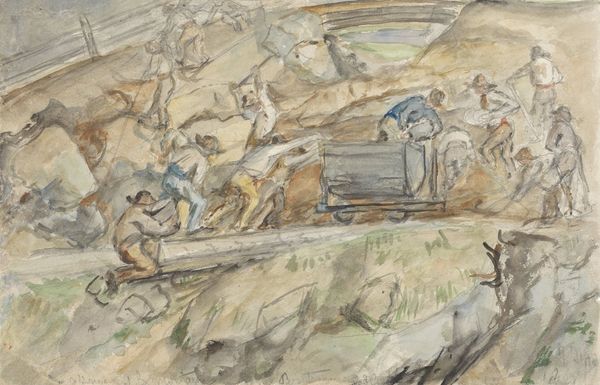
drawing, watercolor, ink
#
drawing
#
ink painting
#
landscape
#
german-expressionism
#
figuration
#
watercolor
#
ink
#
linocut print
#
expressionism
#
watercolour illustration
#
watercolor
Copyright: Public domain US
Editor: Erich Heckel's "Am See," created in 1915 using ink and watercolor, strikes me as quite chaotic, but also full of youthful energy. The figures are so loose and gestural. What do you see in this piece? Curator: I see a ritual of cleansing and renewal played out through imagery deeply rooted in human history. Water, in almost every culture, symbolizes purification, transition, and the subconscious. Look how Heckel uses swirling, almost frantic lines to depict the water, creating a sense of turbulent energy. Editor: Yes, and the figures on the pier – are they about to jump in? Is this about bravery? Curator: Perhaps. But consider the composition as a whole. The pier might represent a liminal space, a threshold. These figures stand at the edge, about to cross into the unknown. Jumping into water symbolizes leaving behind old selves, daring a plunge into the transformative power of the collective unconscious. Does that imagery ring a bell for you, or provoke some thought? Editor: Definitely! That makes the slightly unsettling quality of the piece more apparent – like it's not *just* fun and games. Curator: Exactly. Note the expressions, or lack thereof. They're archetypes more than individuals, representing universal stages and shifts of human experience, stripped bare to convey primal anxieties, communal catharsis, and cultural renewal during that troubled time in 1915. Editor: That really changes how I see it. Thanks. I initially just saw a group of people at a lake, but now it feels heavy with cultural and symbolic meaning. Curator: Precisely. Art often works like that: seemingly simple scenes reveal depths of human experience, connecting us across time through shared visual language.
Comments
No comments
Be the first to comment and join the conversation on the ultimate creative platform.
